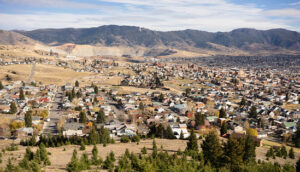In order for a small state, city, or town to grow, it needs to attract businesses and a skilled workforce. Affordable cost of living, ease of transportation to and from, and tax benefits are always top of mind when it comes to the business friendliness of any given location. The state of Montana and the city of Butte have revamped their economic development strategy to incentivize investors and local business owners. Here are a few types of economic development incentives Butte has to offer and how they can help you and your business.
Beneficial Tax Incentives

Stable, healthy, and beneficial tax policies attract smart business owners ready to profit and prosper. Certain states like Alaska, Delaware, Montana, New Hampshire, and Oregon do not have a sales tax, while other states like California and Mississippi have a sales tax rate of over 7%. More specifically, Montana does not have a general sales, use, or transaction tax, making it much easier for local business owners to afford the supplies and equipment needed to comfortably run their operations.
Additionally, some states even impose a tax on inventory, which is yet another cost business owner’s have to account for. The following states impose partial or full taxes on inventory:
- Arkansas
- Kentucky
- Louisiana
- Maryland
- Mississippi
- Oklahoma
- Texas
- Virginia
- West Virginia
- Alaska
- Georgia
- Massachusetts
- Michigan
- Vermont
So, if you purchase machinery and supplies for your business in Montana, your inventory is not taxed and you may save that money for other essential items needed to run your business. Even better, Montana has a low corporate tax rate of just under 7%, which allows new corporate entities to expand and succeed early on.
Business owners in Montana may also take advantage of further tax incentives including:
- Alternative Energy Production
- Biodiesel/Bio-lubricant Production Facilities
- Biodiesel Blending and Storage
- Capital Gains and Dividends from Small Business Investment Company
- Contractors’ Gross Receipts
- Empowerment Zone
- Corporate Energy Conservation Investments
- Film Employment Production and Film Qualified Expenditures
- Geothermal Systems
- Historic Building Preservation
- Research and Development Activities
- Infrastructure User Fees
- Mineral and Coal Exploration
- New and/or Expanded Manufacturing Industry
- Oil Seed Crushing Facility
- Recycling
- Research and Development Firms Tax Exemption
State or City Grants
Grants are a huge bonus to newfound business owners because they do not need to be paid back. There are two types of grants: government and private. Businesses are eligible for grants on a state-by-state, and even city-by-city basis. Montana offers a wide variety of grants to local business owners, including:
- State of Montana Workforce Training Grants: Provides funding to businesses training new, full-time, and part-time workers.
- State of Montana Big Sky Economic Development Trust Funds Grant: Offers job creation grants, which includes worker training, infrastructure costs, construction, relocation costs and working capital. Also offers planning grants, which includes the development of business plans, feasibility studies, preliminary architectural reports, preliminary engineering reports, economic impact studies, workforce surveys, and target industry analysis for economic development projects.
- State of Montana Incumbent Worker Training Fund (IWT): Covers funding for additional training to existing workers for small businesses.
- Montana Technology Innovation Partnership: Grant funding to small but promising life science companies with goals to develop their business.
Private Investor Interest
In 2017, the Tax Cuts and Jobs Acts was passed by Congress, which introduced a new program called Opportunity Zones. These Opportunity Zones were designed to encourage private investors to invest long-term in lower-income communities. In turn, the private investors would receive a tax incentive for investing in the opportunity funds, including capital gain deferral, partial forgiveness, and forgiveness of additional gains.
Butte, Montana was not only selected as an Opportunity Zone, but serves as one of the largest zones in Montana with 1.7 square miles. Its vision is to spur redevelopment within the community leading to job creation and economic growth. Fortunately, Opportunity Zones do not undo the great tax laws already set in place by the state of Montana.
These Opportunity Zones are designated and selected by states and localities instead of Federal personnel to maintain accuracy and ethics.
Location, Location, Location

Although not a tax incentive or grant opportunity, it’s a fact that being in a favorable location has long affected a city or town’s appeal for businesses and residents. In order for a business to thrive, it needs to be easily accessible. Butte, Montana is in a rather favorable location at the intersection of several major transportation and distribution corridors like I-90 and I-15, making it an ideal spot for businesses with and without a brick and mortar location.
Additionally, Butte recently built a new airport terminal, attracting those traveling for business and for pleasure. The best part? Residents in the local surrounding counties don’t have to pay for overnight parking!
Interested in Learning More About Butte’s Advantages?
Reach out to us! We are always happy to answer questions you have about our available parcels and economic development incentives. Whether you are just getting started, exploring expansion opportunities, or plan on relocating, Montana Connections is here to help.




